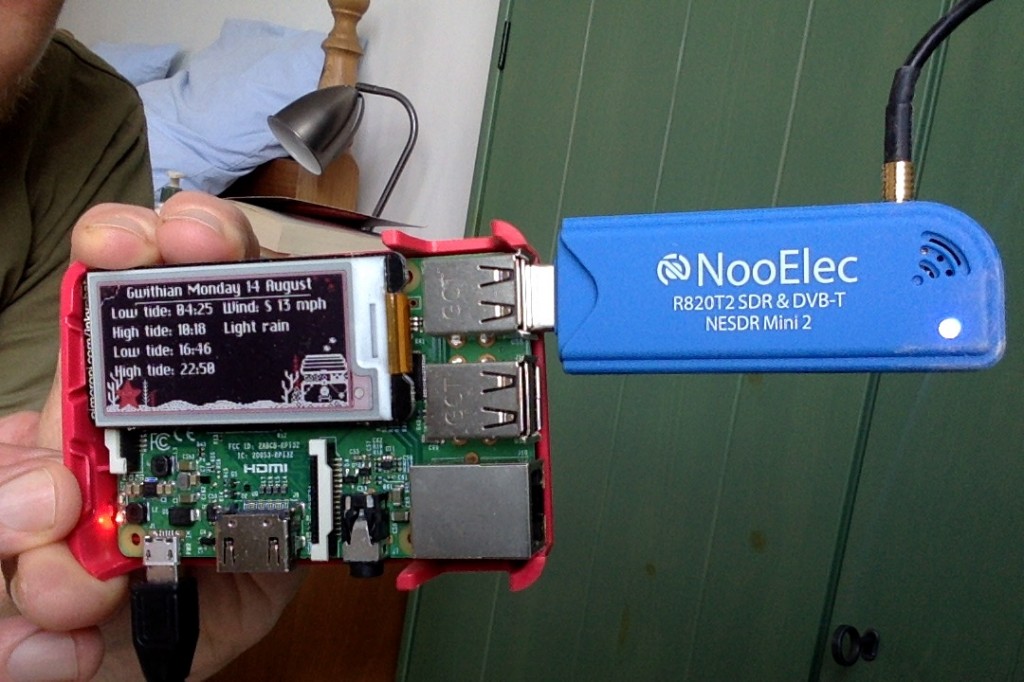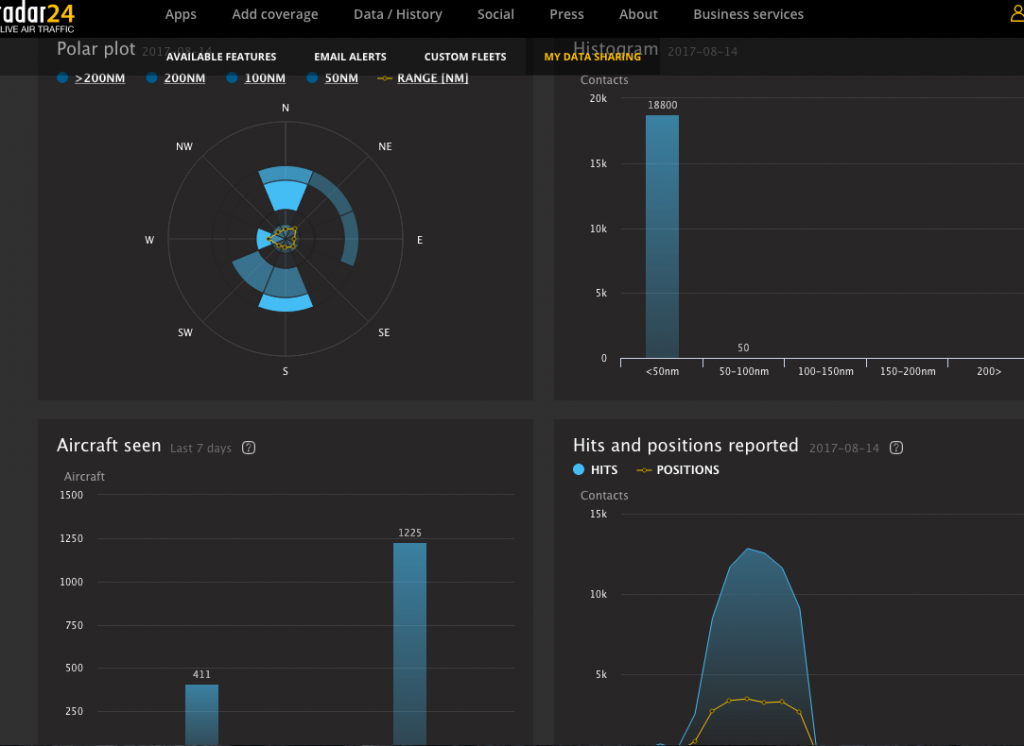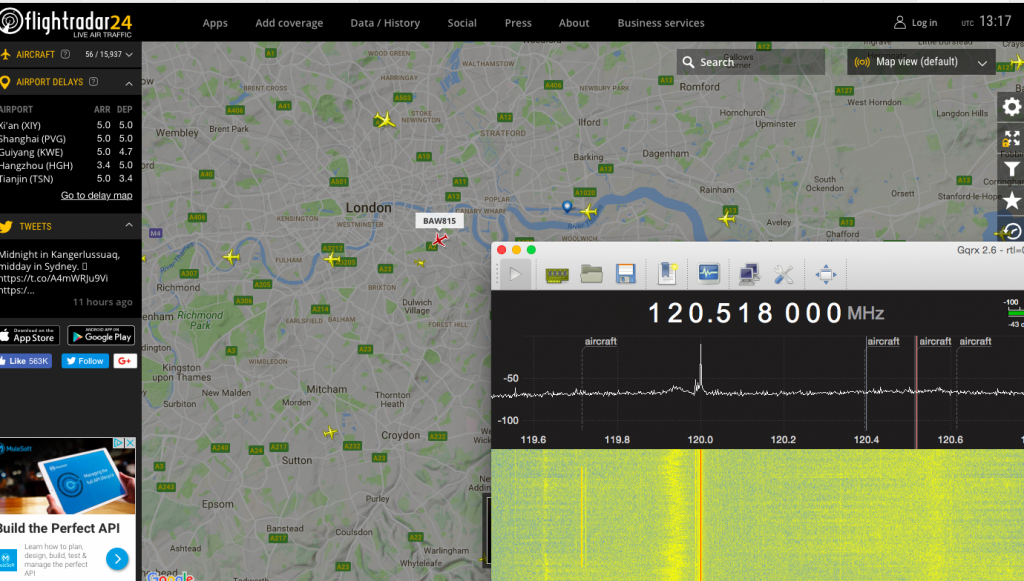 multitasking – tide times and flight data!
multitasking – tide times and flight data!
At the risk of being accused of ‘clickbait’ again, here’s an update on what I’ve been doing with my USB software-defined radio stick. Yes I know this is nothing new, yes I know thousands of people have done this stuff before, it’s just new to me and some folk may find it mildly interesting.
You may recall that I was pleased to discover that this £19 stick would allow me to listen to VHF and UHF radio on a Raspberry Pi and also watch Freeview TV off air and stream it round my house.
I’ve been playing with it a bit more, first on my MacBook Air. We are unfortunate enough to live on a flight path in to London Heathrow Airport, but I managed to make the most of this by having FlightRadar24 open in one window and having the radio receiving software GQRX open in another tuned to 120.395 MHz. This means I can hear the pilots taking, take a guess from their accent which airline they work for, find the plane on screen – and as we are lucky enough to have a panoramic view over London from the south, spot the plane out of my window.
This proved a very nice way of spending an hour or two.
I then found it’s very easy to use a Raspberry Pi and a SDR stick to send data to FlightRadar24. Most planes transmit special signals at 1090 MHz called ADS-B – this is how FlightRadar24 works, collecting data from people on the ground with Raspberry Pis and using dedicated kit suppled by them.
You can download a special Raspbian image or just install it at the command line – instructions are here. Your latitude, longitude (to 4 decimal places) and altitude in feet are needed – you could use your phone’s GPS or a web site to work these out. And yes, I know you can use any old computer for this, Windows, Mac or Linux box. But a Raspberry Pi is cheaper and you may well have one lying around not doing much.
The other benefit of this is that after about 12 hours of sending data to FlightRadar24, you get a free business account worth $500 a year, which gives you an ad-free view of live data and oodles more information about individual flights and weather.
You can monitor which planes your Pi can currently see on a web page using your Pi’s local IP address:
Click on a callsign and it takes you to the regular map view so you can see where the plane is now. You can also see thes planes on a map using the newly-unlocked radar view on the FlightRadar24 web site. Planes my Pi was tracking can be seen in red:
And there’s a nice stats page on the web site that shows how many planes your computer has spotted today, with polar diagrams showing their directions and distance. So far the furthest spot has been 58 nautical miles, that’s just using the supplied rather pathetic telescopic antenna in the loft bedroom. With a proper aerial (some can be made simply out of copper wire or tin cans – loads of guides are available online) you can pull in signals from hundreds of miles away.
 If you don’t want to go down the FlightRadar24 route, you can use a Pi and a USB SDR dongle to capture data and plot it on your own map – see this guide for more details.
If you don’t want to go down the FlightRadar24 route, you can use a Pi and a USB SDR dongle to capture data and plot it on your own map – see this guide for more details.
Now the only problem is that I can’t listen to the pilots’ radio whilst its gathering ADS-B data… so I will have to buy another SDR stick :)



